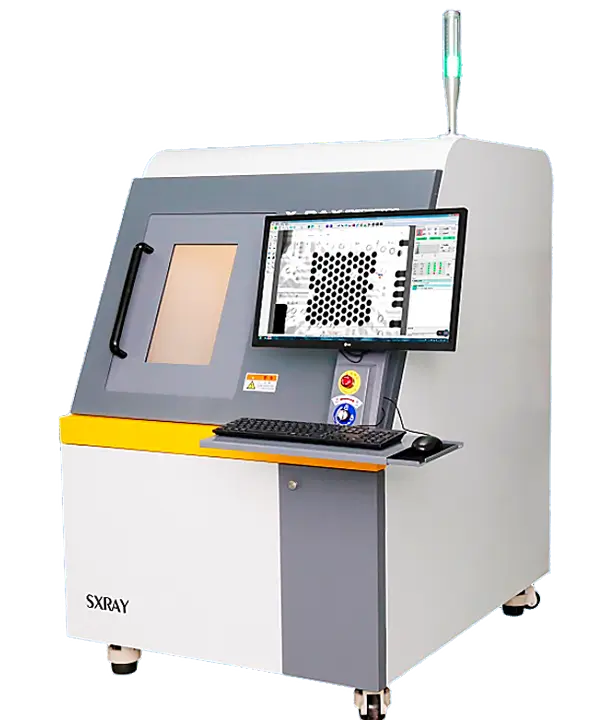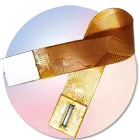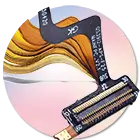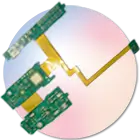Gekun is a top provider of flex PCB assembly services. They focus on flexible circuit board assembly for reliable and tight spaces. Our engineering-driven approach ensures every flexible printed circuit assembly meets strict quality, performance, and cost standards.
We work with customers in such industries as medical devices, automotive, aerospace, and industrial controls. We offer the flex circuit assemblies and the rigid flex PCB assembly, and the flex PCB SMT assembly. Our team is equipped to manage anything from prototypes to production.

What is Flex PCB Assembly?
Flex PC assembly, or FPC assembly, is the procedure of mounting electronic components on flexible printed circuit boards. Flexible circuits are not the same as rigid printed circuit boards. They can bend and twist, and they can even transform into 3D shapes.. This allows for very compact and lightweight product designs.
Also known as:
- Flexible circuit assembly
- Flexible PCB assembly
- Flexible printed circuit board assembly (FPC Assy or FPC ASM)
- FPCA (Flexible Printed Circuit Assembly)
Common FPC applications include:
- Wearables & Medical Implants
- Cameras & Imaging Modules
- Automotive Displays & Sensors
- Consumer Electronics
- High-Density Mobile Devices
Other related page: Mastering SMT Assembly: Advantages and Future Trends
Our Flex PCB Assembly Capabilities
| Capability | Details |
|---|---|
| Assembly Types | SMT, Through-Hole, Mixed |
| Component Sizes | 01005, BGA, CSP, QFN, LGA, Fine-Pitch ICs |
| Assembly Board Types | Single-layer, Multilayer, Rigid-Flex, Flex |
| Reflow & Soldering | Leaded / Lead-Free, Low-Temp Solder, Manual & Reflow |
| Inspection | AOI, X-ray, Visual, Flying Probe |
| Carrier Fixture Support | Custom carriers for ultra-thin or highly flexible boards |
| Material Compatibility | Polyimide, PET, High-Tg FR4 (Rigid-Flex), Copper Foil |
| Surface Finish Compatibility | ENIG, OSP, HASL, Immersion Silver |
The Flex PCB Assembly Process
Detailed assembly process can be referenced: PCB Assembly Process: A Step-by-Step Guide
We designed our flex PCB assembly process to improve speed and reliability. It also protects the delicate structure of flexible circuits.
- Incoming Material Prep – FPC cleaning, drying, and flat-laying
- Solder Paste Application – Precision stencil printing or jet dispensing
- Component Placement – High-speed pick & place with vision alignment
- Reflow Soldering – Profiled for flex material and copper thickness
- Post-Reflow Inspection – AOI & X-ray check for solder quality
- Through-Hole Assembly (if needed) – Manual or wave soldering
- Testing & Final QC – Electrical testing, visual, or functional testing
- Packing & Delivery – Anti-static packaging and moisture protection
Custom fixtures are used throughout to prevent warping or tearing during flex PCB SMT assembly.
Flex PCB Assembly Examples
| Application Field | Assembly Focus |
| Medical Sensors | Micro BGA, high-density routing |
| Automotive Displays | Rigid-flex boards, vibration-resistant joints |
| Wearables | Ultra-thin flex circuits, low-temp soldering |
| Consumer Electronics | High-speed signal integrity, compact layout |
| Aerospace Modules | Multi-layer flex, heat-resistant soldering |
Looking for FPC examples or past project showcases? [Contact us] for technical case studies and design files.
Frequently Asked Questions (FAQs)
Q1: What is FPCA, and how does it differ from standard PCB assembly?
FPCA stands for Flexible Printed Circuit Assembly. It involves mounting components on flexible printed circuit boards. This is different from rigid PCB assembly, where the boards cannot bend.
Q2: Can you handle both flex and rigid-flex PCBs?
Yes. Our line supports flex circuits, rigid boards, and flex and rigid flex configurations.
Q3: What is your MOQ for flex PCB assembly?
We support both prototypes (as low as 5 units) and full production runs.
Q4: Do you follow any standards for assembly?
Yes. We comply with IPC-A-610 (Class 2 & 3), RoHS, and industry best practices.
Q5: Can you assemble third-party-provided FPCs?
Yes. We offer standalone FPC assembly services, even if you source boards elsewhere.
Why Choose Gekun for FPC Assembly?
- Dedicated Flex Engineering Team – Specializing in flexible circuit board assembly
- Advanced Tooling – Soft board carriers, custom jigs, and modular SMT lines
- High Quality Standards – IPC-A-610 Class 2 & 3, ISO-certified processes
- Rapid Prototyping to Mass Production – Full-scale FPCB assembly solutions
- Experience Across Industries – Medical, industrial, consumer, and defense
We also support FPC cable assembly, FPC connector assembly, and hybrid rigid flex circuit configurations.
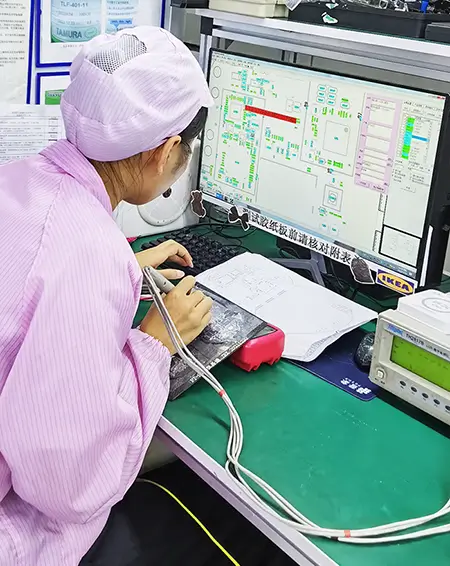
Get your flexible circuit assembly started today. Upload your Gerber, BOM, and Assembly Drawing files to get a custom quote. Our support team will guide you through material options, layout adjustments, and flex PCB design improvements.
Start Your Flex PCB Assembly Project Now >>
